Finance assignment question
Part I – Financial Statement Errors (15 points)
In each of the following questions, I have described transactions that were either “missed” or were recorded wrong. Fiscal year end (i.e., end of the annual reporting period) is December 31. For each question, show by what amount the financial statements are misstated without the effect of any corrections that should be made. Ignore taxes. Indicate the amounts involved and the effects on each of the financial statement component listed, using the following notation: overstated (O), understated (U) or no effect (NE). Provide an explanation for your solution.
If there is no effect in a given component, write “NE” in the respective space (i.e., do not leave it blank or else you will lose points). Questions are independent of one another (i.e., the transaction or event in the first question does not affect the second question and so on).
Example: A firm neglected to record a payment to a supplier of $10,000.
|
Current Assets |
(O) 10,000 |
Long-term assets |
NE |
|
Current Liabilities |
(O) 10,000 |
Long-term liabilities |
NE |
|
Capital Stock |
NE |
Retained Earnings |
NE |
Explanation: Current Assets are overstated because a $10,000 cash payment is not recorded (overstating the cash account, thereby overstating the current assets). Because the payment to the supplier is not recorded, the corresponding liability is not reduced by $10,000, thereby overstating accounts payable (a component of current liabilities).
***
- In the middle of the fiscal year, on July 1st, The Bite purchased a new coffee machine for $10,000 in cash. The coffee machine has a 5-year useful life and a salvage value of $500. The accountant forgot to record ANY entries related to the purchase and depreciation of the coffee machine during the year.
|
Current Assets | Long-term assets | ||
|
Current Liabilities | Long-term liabilities | ||
Capital Stock | Retained Earnings |
Explanation:
- Microhard Inc. manufactures and sells a bundled product of software and technical support for one year to its clients. Microhard typically receives payment from its customers upfront for this product. In the last month of the 2011 fiscal year, Microhard received $750,000 in cash from its customers for payment in full. Microhard delivered the software to its client at the time of the cash collection but it will start providing the technical support in the first month of 2012. Microhard’s management is struggling to report earnings that will meet analysts’ forecasts, and they recognized $750,000 cash collection as revenue for 2011. Assume that 1/3 of the cash collection was for technical support.
Current Assets | Long-term assets | ||
Current Liabilities | Long-term liabilities | ||
Capital Stock | Retained Earnings |
Explanation:
- Rolls-Royce Holdings plc derives its revenues from long-term contracts in its marine business and uses the percentage-of-completion method to recognize its revenues. The UK Government recently awarded Rolls-Royce a contract to develop a new propulsion system for submarines. Assume that the total value of this contract is £3 billion and is expected to take three years, and cost £500 million in each year. The actual costs in the first year were as expected. After the first year of the contract, suppose that Rolls-Royce recognized £2 billion of revenues.
Revenues | |
Expenses | |
Retained Earnings |
Explanation:
Part II: Long-lived Assets—London Business School (25 points)
Please answer the following questions using the excerpts below from London Business School’s financial statements pertaining to fiscal year ended 31 July 2011. For simplicity, the questions refer to this fiscal year as 2011.
- What is the net book value of tangible assets (as reported at the end of 2011)?
- What is the balance of accumulated depreciation at the end of 2011?
- What was the depreciation expense London Business School reported for 2011? For which kind of tangible asset does it incur the largest depreciation expense as a proportion of the total depreciation expense?
- Which tangible asset category does London Business School depreciate the slowest (i.e. assumes the longest useful life)?
- Assuming no salvage value for computer equipment, what is the length of useful life London Business School uses for this kind of tangible equipment?
- List three reasons that contributed to the change from the end of 2010 to the end of 2011 in the net book value of the tangible assets?
- Did London Business School revalue any tangible assets in 2011?
- What is the net book value (in thousand GBP) of the freehold and long leasehold (land and buildings) as reported at the end of 2011?
- How much accumulated depreciation did London Business School report at the end of 2011 for the tangible assets that were revalued?
- What amount of costs did London Business School capitalize in 2011 that pertained to the assets in course of construction? List four potential cost items that could be included in this amount.
- What is the effect of £7,545 decrease in the gross book value of tangible asset category, “Facility improvements” on the overall gross book value tangible assets London Business School reported at the end of 2011? Why?
- How much pre-tax gain or loss would London Business School need to report in 2012, had it sold all of its freehold land and buildings on August 1, 2011 (first day of the new fiscal year) for £20 million?
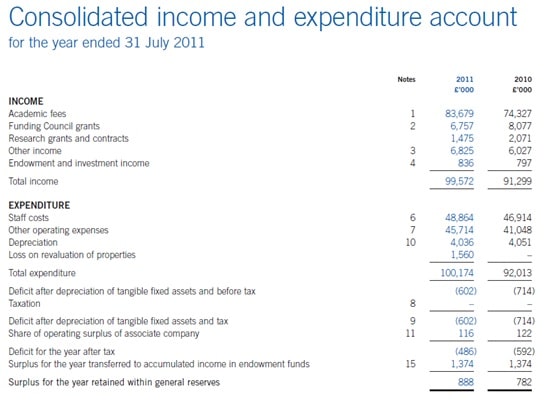
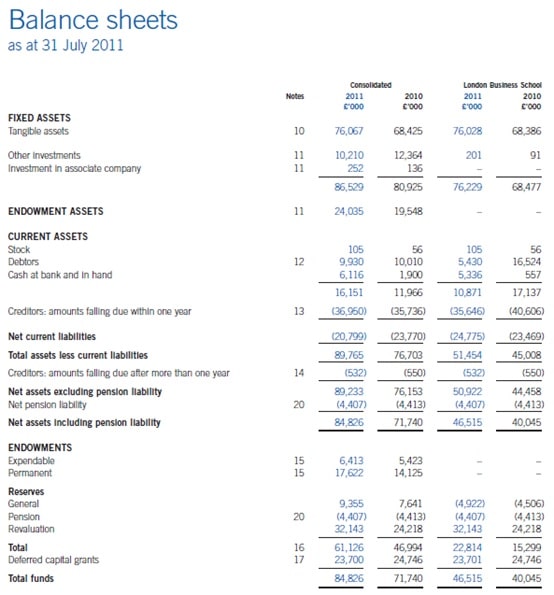
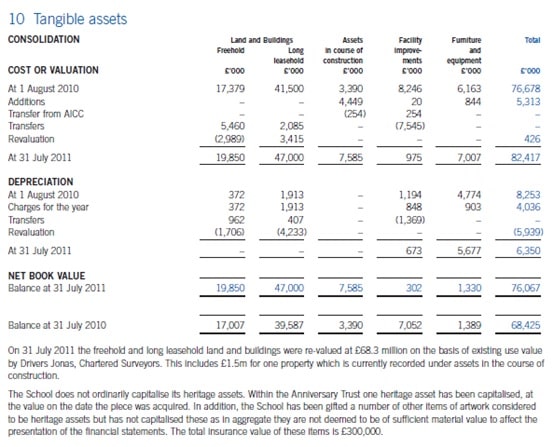
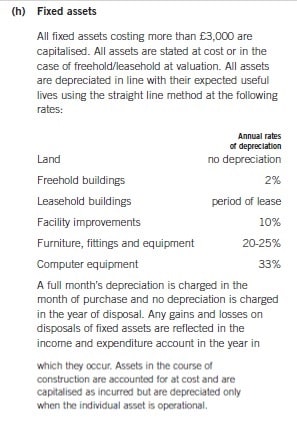
Part III: Shareholders’ Equity (10 points)
We are given the following worksheet about Dalek Corp. at the end of 2010. Notice that this is not a transaction worksheet but a simplified version of the statement of shareholders’ equity. Please answer the short questions on the next page based on the information provided here. (Numbers suffice, you do not need to provide any explanations.)
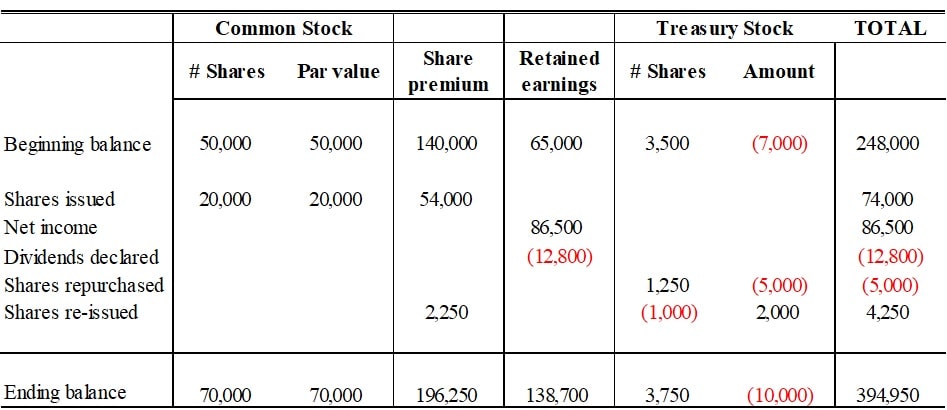
- What is Dalek’s earnings in 2010?
- What is the total dollar amount of dividends declared?
- If beginning dividends payable is $100 and ending dividends payable is $200. How much dividends are paid out in cash?
- What is the par value of a share of common stock?
- What price did they issue new shares of common stock at?
- How many shares did Dalek repurchase?
- At what price did Dalek resell treasury stock?
- How many shares are outstanding on 12/31/2010?


